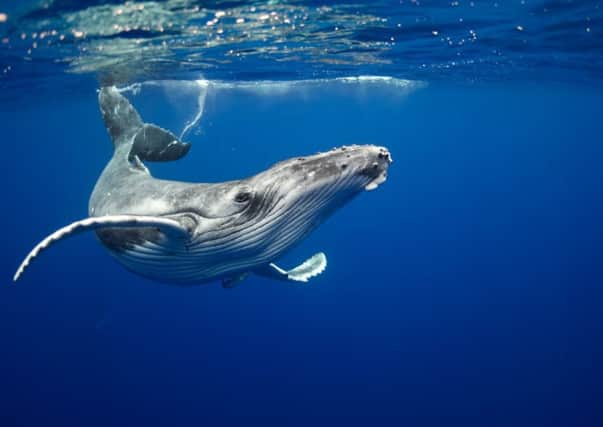Whales compose songs to attract females, Scots scientists find


Now a new book on the giant, magnificent creatures of the deep by four scientists at St Andrews University has revealed how the humpback whales of Eastern Australia compose a new “hit” every year which they sing as part of their migration from the feeding grounds in the Antarctic to the breeding grounds off north east Australia and the South Pacific.
The following year other males have picked up the beat, but composed variations on the beat.
Advertisement
Hide AdAdvertisement
Hide AdMeanwhile the original, trend-setting whales have “recorded” a new song.
The tale in “Whales: their past, present and future”, by Professor Philip Hammond, Dr Sonja Heinrich, Dr Sascha Hooker and Professor Peter Tyack of the university’s sea mammal research unit, has been published by the Natural History Museum in London to tie in with a major new exhibition.
Professor Hammond, who described the book as a “whirlwind time travel” through 50 million years of the evolution of whales, said: “The whales in Eastern Australia are generating an original new song, and then the next year the whales from the west have picked it up but have done it their own way. This is known as cultural transmission and is not inherited behaviour but a behaviour which they learn.”
The book also describes how the Cuvier beaked whale can dive to the depths of up to two miles to feed and can hold its breath for over two hours.
He added: “Whales include the largest creatures to have roamed this planet but some of the smallest whales are struggling to avoid extinction. We hope readers, and visitors to the exhibition will be inspired to help conserve these amazing mammals and ensure they remain as integral components of marine ecosystems.”
Other highlights include how Cuvier whales can dive to depths of up to two mile under the ocean’s surface as they look for food, and can hold their breath for than two hours.
“The better we understand the lives of whales, the better we will be able to inform decisions made about managing human influence on them.”
* ‘Whales: Beneath the Surface’ runs until 28 February 2018 , Natural History Museum, London.